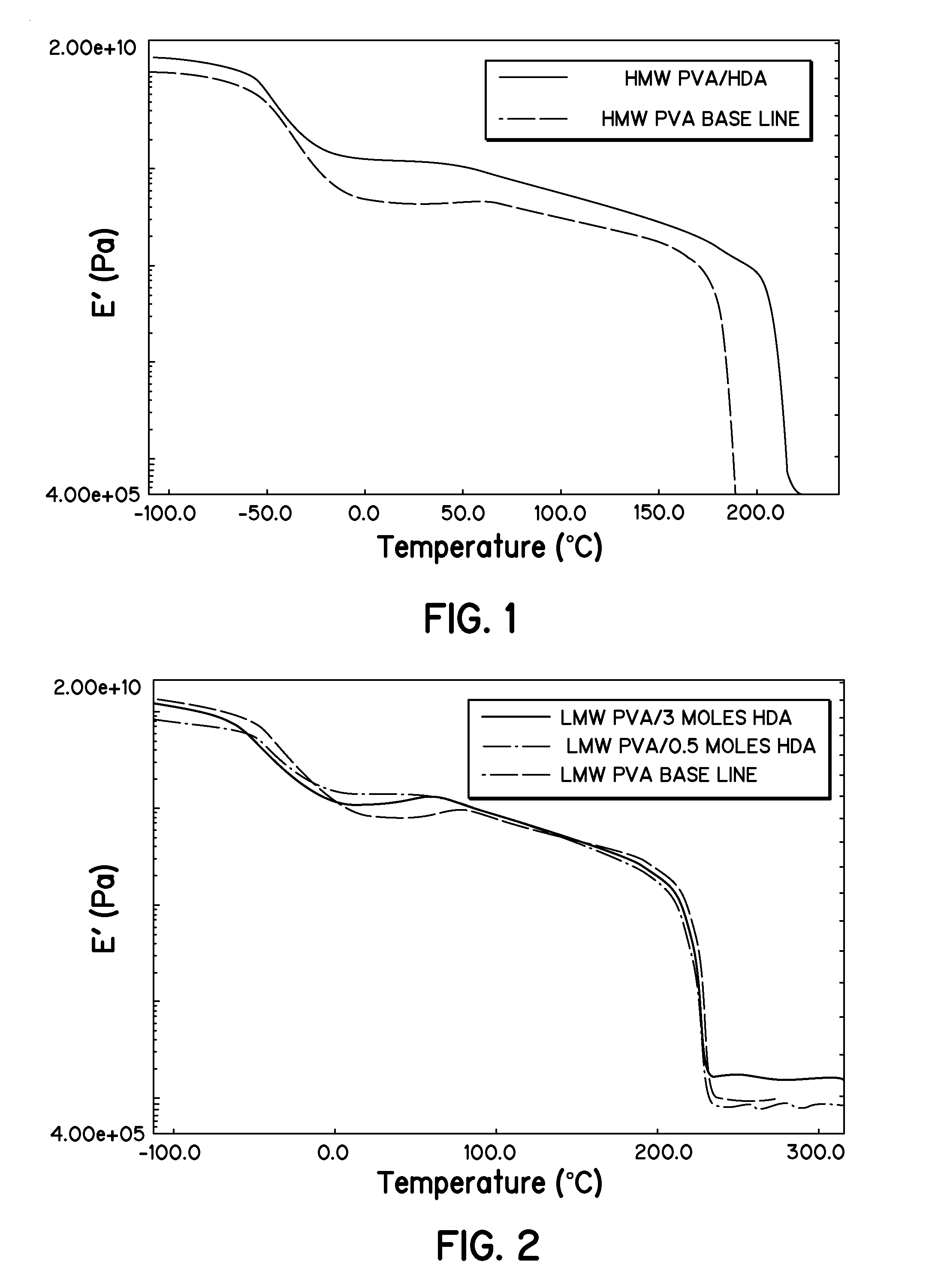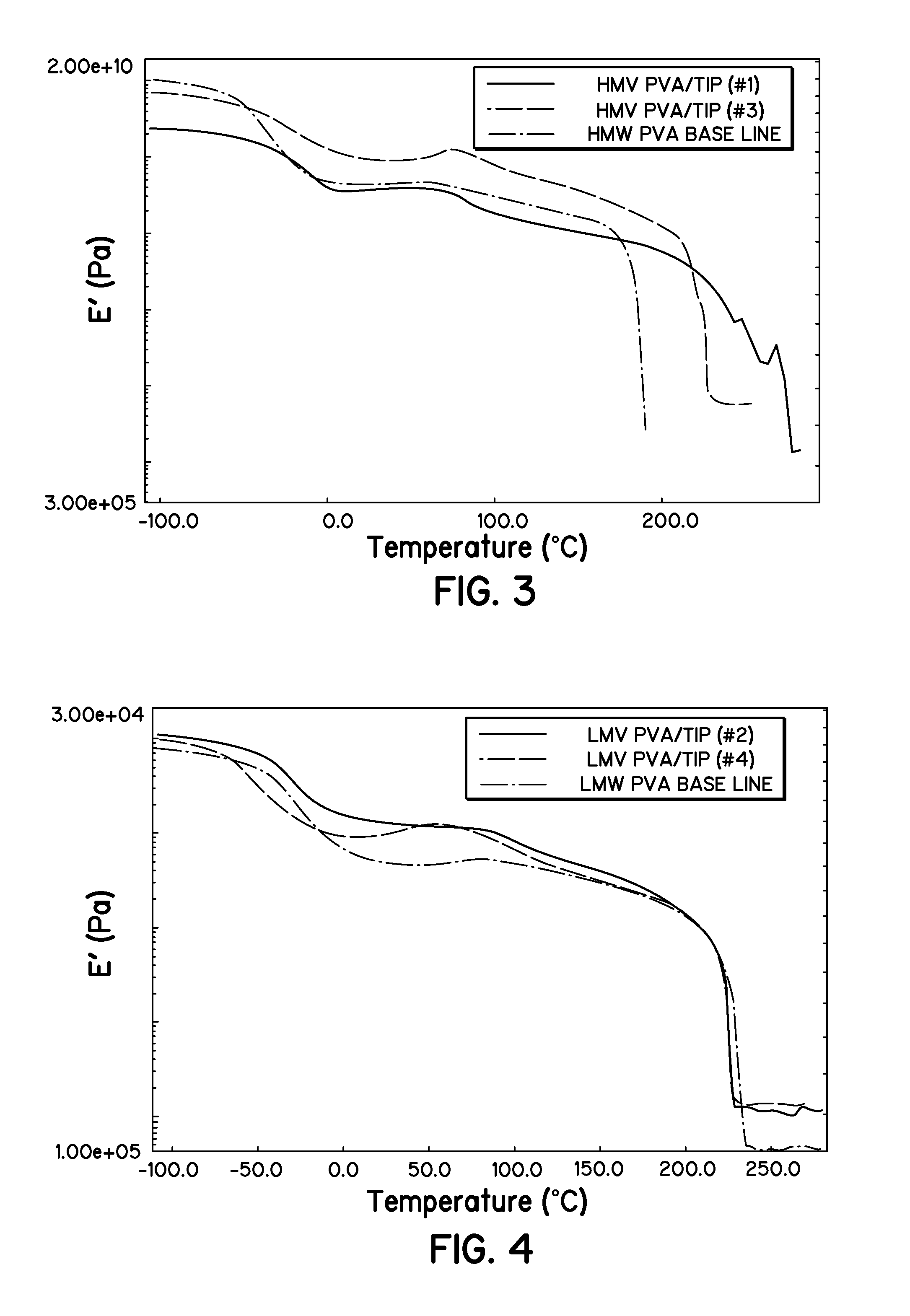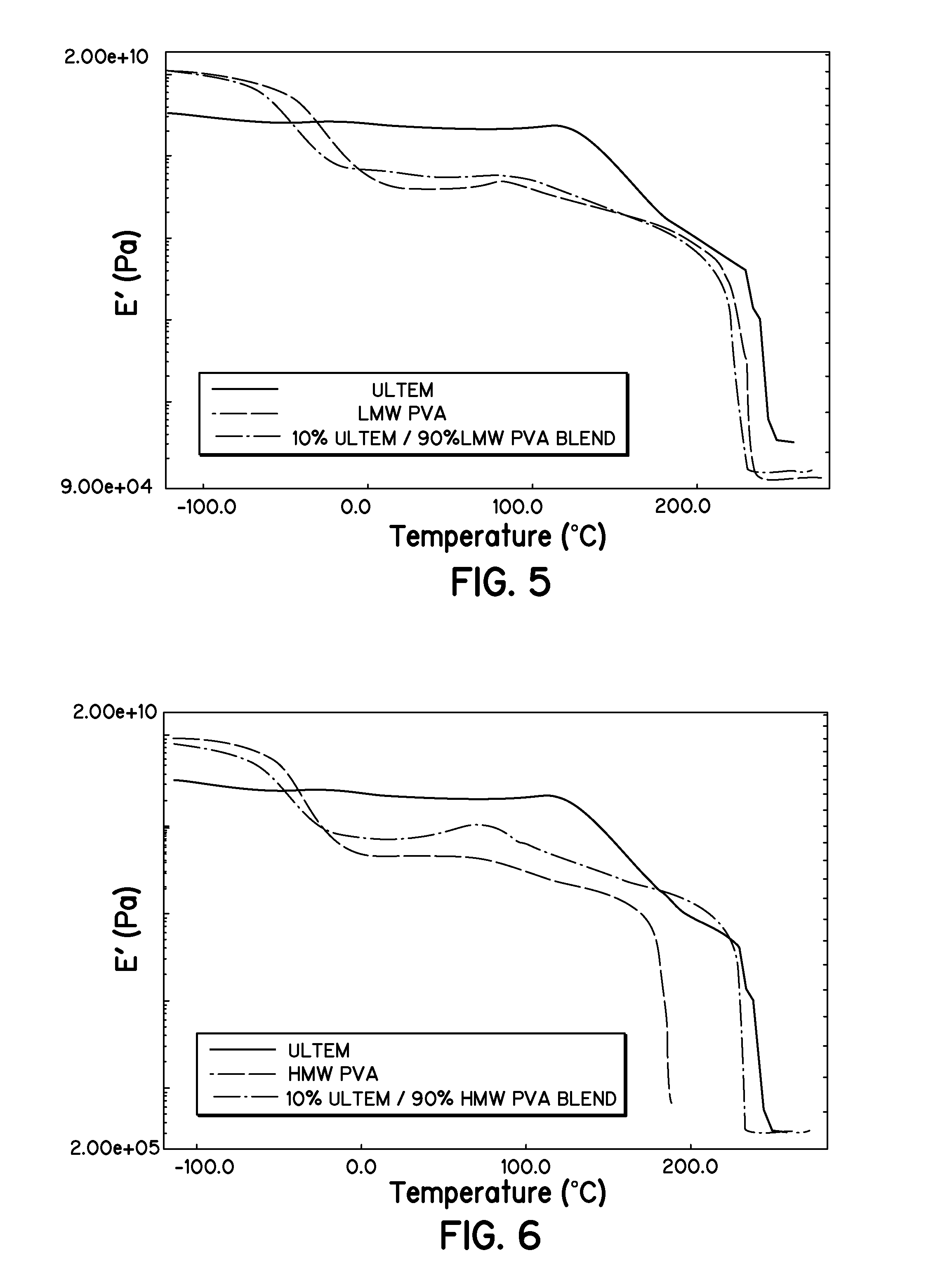Phase separated, branched, copolymer hydrogel
- Summary
- Abstract
- Description
- Claims
- Application Information
AI Technical Summary
Problems solved by technology
Method used
Image
Examples
example 1
Synthesis of PVA Hydrogel
[0036]Polyvinyl alcohol (PVA) was used in two different molecular weight versions, a low molecular weight (LMW) of 31,000-50,000 g / mole and a high molecular weight (HMW) of 130,000 g / mole. The PVA was dried in a vacuum oven at room temperature for 24 hours and stored in a desiccator prior to use.
[0037]Solutions of the high and low molecular weight PVA, referred to as HMW PVA and LMW PVA, respectively, and dimethyl sulfoxide (DMSO) were made. A 10 percent by weight (wt. %) solution was made for the LMW. A 7 wt. % solution was used for the HMW PVA due to its increased viscosity over the LMW PVA. Films of 40 mm thickness were cast from these solutions on soda lime glass plates and dried in an oven at 70° C. for 24 hours. The films were then removed and placed in a desiccator. It is noted that thinner films were initially attempted, but were very difficult to remove. It is believed that the hydroxyl groups on the PVA hydrogen bond with the hydroxyl groups on the...
example 2
Synthesis of PVA / HDA Hydrogel
[0038]4,4′-(hexafluoroisopropylidene) diphthalic anhydride (HDA) was obtained from Sigma-Aldrich (St. Louis Mo.). Solutions of 10 wt. % and 7 wt. % were made from LMW and HMW PVA, respectively, and DMSO. The HDA was dissolved in DMSO prior to mixing with the PVA solutions. The extent of reaction at gelation, which is the point at which the composition changes from a liquid to a solid, was predicted for both LMW and HMW PVA as a function of moles of HDA.
[0039]From this analysis, it was determined to use the mid-point for gelation to assure crosslinking while allowing enough time to cast the films. Therefore, in the reaction, the ratio of 0.5 moles of HDA to 1 mole of HMW PVA was used. The HDA was dissolved in DMSO and added to the HMW PVA while under stirring and at 70° C. This mixture gelled almost instantaneously, so the amount of HDA was reduced to 0.25 moles for the LMW PVA, and the HDA was added to the stirred LMW PVA at room temperature. This mixtur...
example 3
Synthesis of PVA / TIP Hydrogel
[0041]Titanium (IV) isopropoxide (referred to as TIP) was first dissolved in DMSO and then added to the room temperature solutions of 7 wt. % HMW PVA and 10 wt. % LMW PVA and DMSO. High and low TIP concentrations were investigated in an attempt to get both branched and cross-linked structures. Table 1 gives the reaction data and shows that both cross-linked and branched structures appear to have been formed based on whether the solution gelled or not, respectively (i.e., branched only will not gel, cross-linked and branched will gel). The high TIP mole ratios resulted in the solutions gelling, as noticed visually. The lower mole ratios of TIP did not result in a gelled solution prior to casting films. Films were cast from the mixtures and placed in an oven at 70° C. to cure and dry over night. The resultant films were placed in a desiccator.
TABLE 1PVA / TIP Reaction DataTIP / PVAMOLEMOLEREACTIONMWMOLE PVATIPRATIORESULTS1HMW6.67E−061.34E−0420Gel2LMW3.11E−055....
PUM
| Property | Measurement | Unit |
|---|---|---|
| Fraction | aaaaa | aaaaa |
| Fraction | aaaaa | aaaaa |
| Fraction | aaaaa | aaaaa |
Abstract
Description
Claims
Application Information
 Login to View More
Login to View More - R&D Engineer
- R&D Manager
- IP Professional
- Industry Leading Data Capabilities
- Powerful AI technology
- Patent DNA Extraction
Browse by: Latest US Patents, China's latest patents, Technical Efficacy Thesaurus, Application Domain, Technology Topic, Popular Technical Reports.
© 2024 PatSnap. All rights reserved.Legal|Privacy policy|Modern Slavery Act Transparency Statement|Sitemap|About US| Contact US: help@patsnap.com










